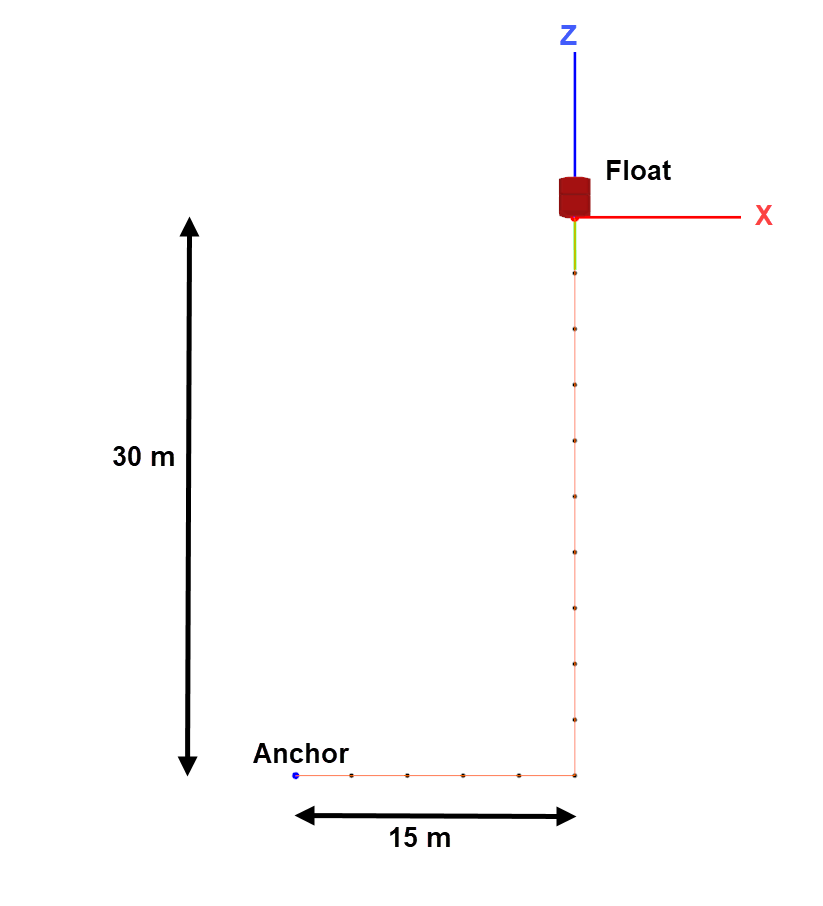Pre processing
Last reviewed version: 2.18.0Establish the model in AquaEdit
The model is based on the sketch given in the introduction of this case study. Create one component group of type TRUSS, which should resemble the rope. The main dimensions are described in the figure below.

Model according to the figure above. Discretize the horizontal part in 5 elements, and the vertical in 10 elements.
Component properties
Suggested cross sectional properties for the rope is provided in the table below.
| 1 Rope | |
|---|---|
| Type | TRUSS |
| E-modulus | 2.1E+09 N/m2 |
| Area | 1.963E-03 m2 |
| Diameter | 50 mm |
| Weight in air | 2.5 kg/m |
| Weight in water | 0.4874 kg/m |
| Diameter Y / Z | 0.05/ 0.05 |
| Drag coefficient Y / Z | 1.2 / 1.2 |
| Adde mass coefficient Y / Z | 1.0 / 1.0 |
Properties of anchor
To resemble the anchor, this node is for simplicity restrained in all degrees of freedom.

Properties of Float
The float has a rectangular waterplane area of 1.5m2, which correspond to a vertical waterplane stiffness of Aw ∙ ρ ∙ g = 1.5 ∙ 1025 ∙ 9.81 = 15083 N/m. Create a node decorator spring type Buoy with Stiffness Z equal to 15083 N/m. Right click the upper node of the rope > Node > Spring > Create new > Type: Buoy.

Select OK.
Properties of spring Displaced
In AquaEdit, select the four nodes on the horizonal part of the rope. Right click > Nodes > Spring > Create new. By holding control while you click on the nodes, multiselect is activated.

In the Edit spring-window, select Displaced as the spring Type. Leave Displaced amount to 0.0 m and translatory spring stiffness in z-direction should be 1000 N/m. When the Displaced amount is defined to 0.0, the node will only displace due to gravitational forces of the rope.

Select OK. Remember to save the model from time to time, this will reduce risk of losing data. The model is now ready for static analysis.